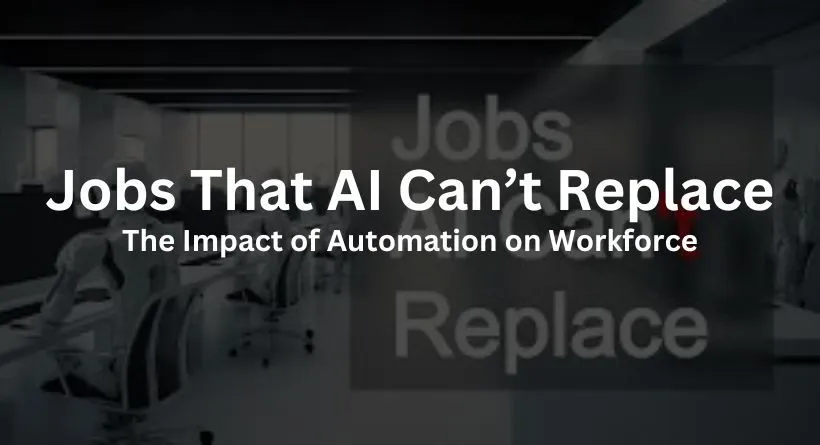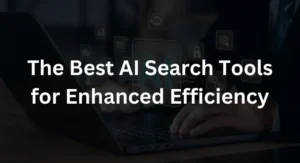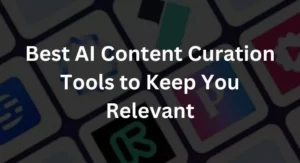
In a rapidly evolving technological landscape, artificial intelligence (AI) is making significant strides in various industries. While the integration of AI has transformed many aspects of our lives, there are still certain jobs that AI can’t completely replace. This article explores the impact of automation on the workforce and identifies the areas where human expertise remains irreplaceable.
The Impact of AI on the Future Workforce

The rise of AI has ushered in a new era of automation, challenging traditional job roles. However, it’s important to distinguish between AI augmenting our workflows and AI entirely replacing them. Currently, AI primarily aids decision-making processes, leading to shorter response times and improved accuracy.
For instance, in the field of healthcare, AI-powered computer vision applications enable magnetic resonance imaging (MRI) tools to identify issues in soft tissues at a rate hundreds of times faster than human professionals. Instead of rendering medical experts obsolete, AI assists them in achieving results more efficiently. Similarly, in finance, AI can simulate market scenarios, reducing the risk of errors and expediting analysis and decision-making processes.
This pattern of AI enhancing, rather than replacing, human roles is prevalent in various industries. Sectors like finance and healthcare are benefiting from streamlined AI-supported data analysis. Employees in these sectors can adapt to new AI tools with minimal additional training. However, the impact of AI on the workforce varies depending on the nature of the job.
You may also like reading: AI won’t replace social teams: Here’s why
The Vulnerable Jobs
Some jobs, especially those involving repetitive tasks, are at a higher risk of automation. AI-enabled robots are capable of outperforming humans in these roles, delivering better results with greater efficiency and fewer resources. Sectors such as manufacturing and transportation are particularly vulnerable in the long term, and jobs like crane operators, assemblers, service laborers, inspection professionals, machinists, and electrical technicians may be replaced by automation.
According to a McKinsey research report titled “The Future of Mobility Is at Our Doorstep,” autonomous vehicles are expected to make up 40% of new vehicle sales by 2040. This shift could automate tasks such as resource allocation in construction and remote control of emergency vehicles, reshaping fleet management.
In the oil and gas industry, a report by EY suggests that 60% of equipment operators may be replaced by AI-enabled robots in the coming years. Moreover, IDTechEX predicts that over 100,000 autonomous forklifts and trucks will be sold by 2030. Given that the return on investment for these machines is achieved in just 18 months on average, skills related to navigation and operation are likely to become obsolete.
The Role of Human Interaction
It’s important to note that certain industries heavily reliant on human-to-human interaction will never be fully automated. Professions in education, for instance, require social intelligence and empathy, qualities in which AI struggles to excel. Similarly, sales and marketing sectors demand a nuanced understanding of individuals’ backgrounds and preferences, areas where AI inherently falls short. Human involvement remains fundamental in these industries for successful operation.
AI-ready Talent Scarcity: What to Do?
While AI-enabled automation may lead to job displacement, it also creates opportunities. LinkedIn reports that hiring for artificial intelligence specialists has grown by 74% in the past four years. The World Economic Forum predicts that 97 million new roles may emerge as a result of AI disruption by 2025.
However, the demand for AI talent outpaces the supply, and it’s crucial to address this scarcity. To ensure a smooth transition in the job market, organizations must focus on reskilling and upskilling their employees. By nurturing their existing workforce, companies can bridge the skills gap and adapt to the evolving landscape.
In cases where highly specialized AI solutions are required, attracting new talent becomes inevitable. However, many of the necessary skills already exist within the current workforce. By investing in the training and development of current employees, organizations can solve the ethical dilemma of job displacement while reaping economic benefits.
The Symbiosis of Human and AI

Contrary to the misconception that AI is meant to cut costs by reducing headcount, it primarily enhances human capabilities. AI optimizes processes, freeing up workers’ time to focus on more creative and strategic tasks. Companies should view AI adoption as a means to bring more value through a powerful partnership of human judgment and computer intelligence.
Government’s Role
Despite the best efforts of companies to prepare their workforce for the AI revolution, there will be individuals left without relevant skills. To address potential unemployment, governments should play an active role in mitigating the economic destabilization caused by automation. Universal basic income schemes, as proposed by experts, could help ensure the well-being of those affected by automation and digitization.
Tips for Business Leaders
In a world increasingly driven by AI, attracting and retaining AI talent will be a defining factor for business leaders. To navigate this transformation successfully, companies should consider the following steps:
- Plan for the Long Term: Develop a clear implementation roadmap to estimate your AI talent needs over time.
- Evaluate Workforce Skillsets: Identify employees who can be upskilled or retrained to meet the demands of AI.
- Change Management Strategy: Involve business leaders and opinion makers early to address employee concerns and facilitate cross-functional collaboration.
- Involve End Users: Create intuitive, user-friendly AI tools and demonstrate the logic behind AI decisions, especially in sensitive industries.
- Educate Beyond Upskilling: Invest in AI-centric education, particularly in fields where AI is increasingly valuable, such as healthcare.
Conclusion
In conclusion, while AI is reshaping the workforce, there are still many roles that require the unique capabilities of humans. The future lies in a harmonious partnership between humans and AI, with businesses and governments working together to ensure a smooth transition into this new era. Adaptation, reskilling, and upskilling will be key to thriving in an increasingly automated world.
FAQs
1. Will AI completely replace all jobs in the future?
No, AI will augment many jobs, but certain roles reliant on human interaction and empathy are unlikely to be fully automated.
2. What steps can companies take to prepare for AI integration?
Companies should plan for the long term, evaluate employee skillsets, create a change management strategy, involve end users in AI development, and invest in AI-centric education.
3. What are the potential consequences of AI-related job displacement?
Governments and businesses must address potential unemployment by considering solutions like universal basic income and upskilling programs.
4. How can AI be harnessed to benefit the workforce?
AI should be seen as a tool to enhance human capabilities, freeing up time for more creative and strategic tasks.
5. What industries are most vulnerable to AI-driven automation?
Industries with repetitive tasks, such as manufacturing and transportation, are at the highest risk of automation.





